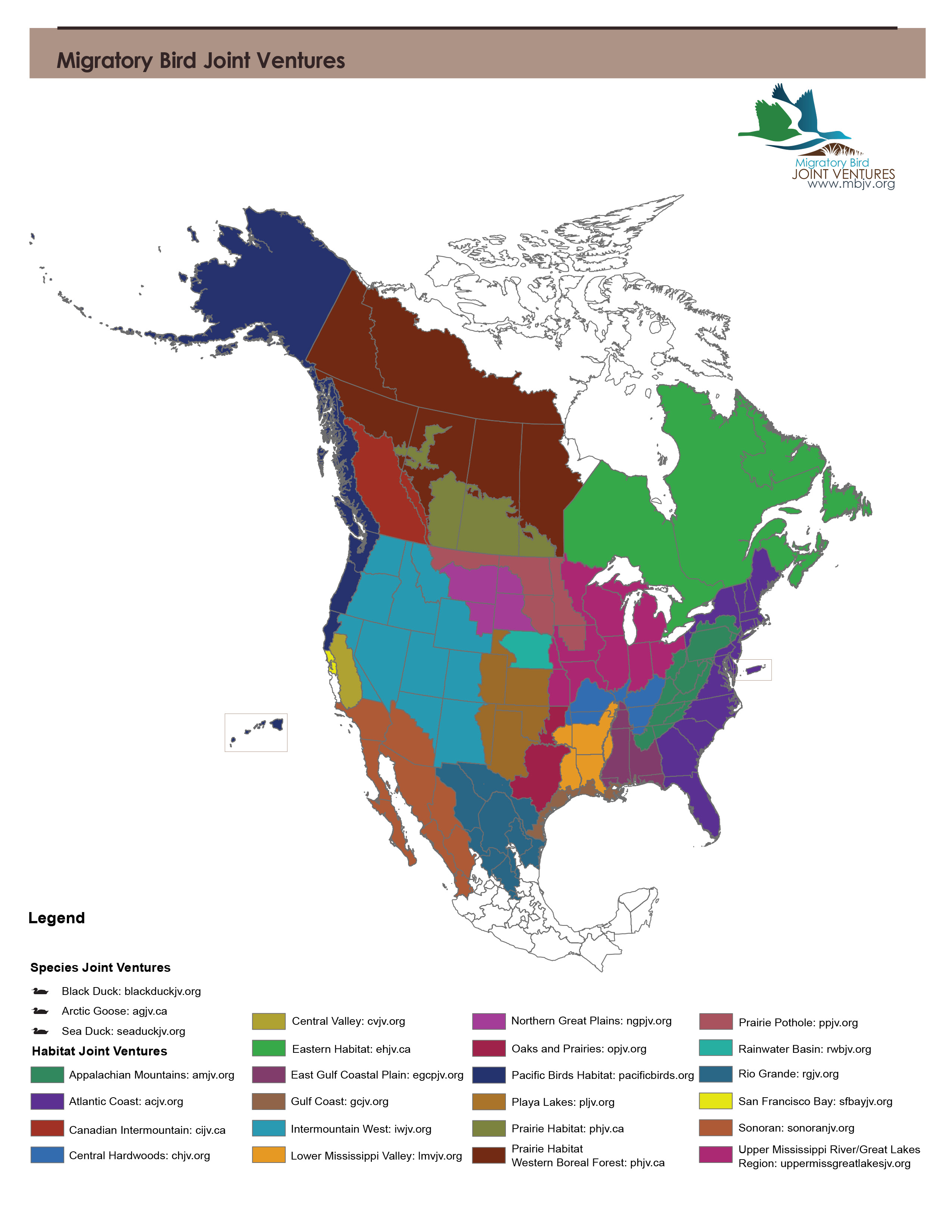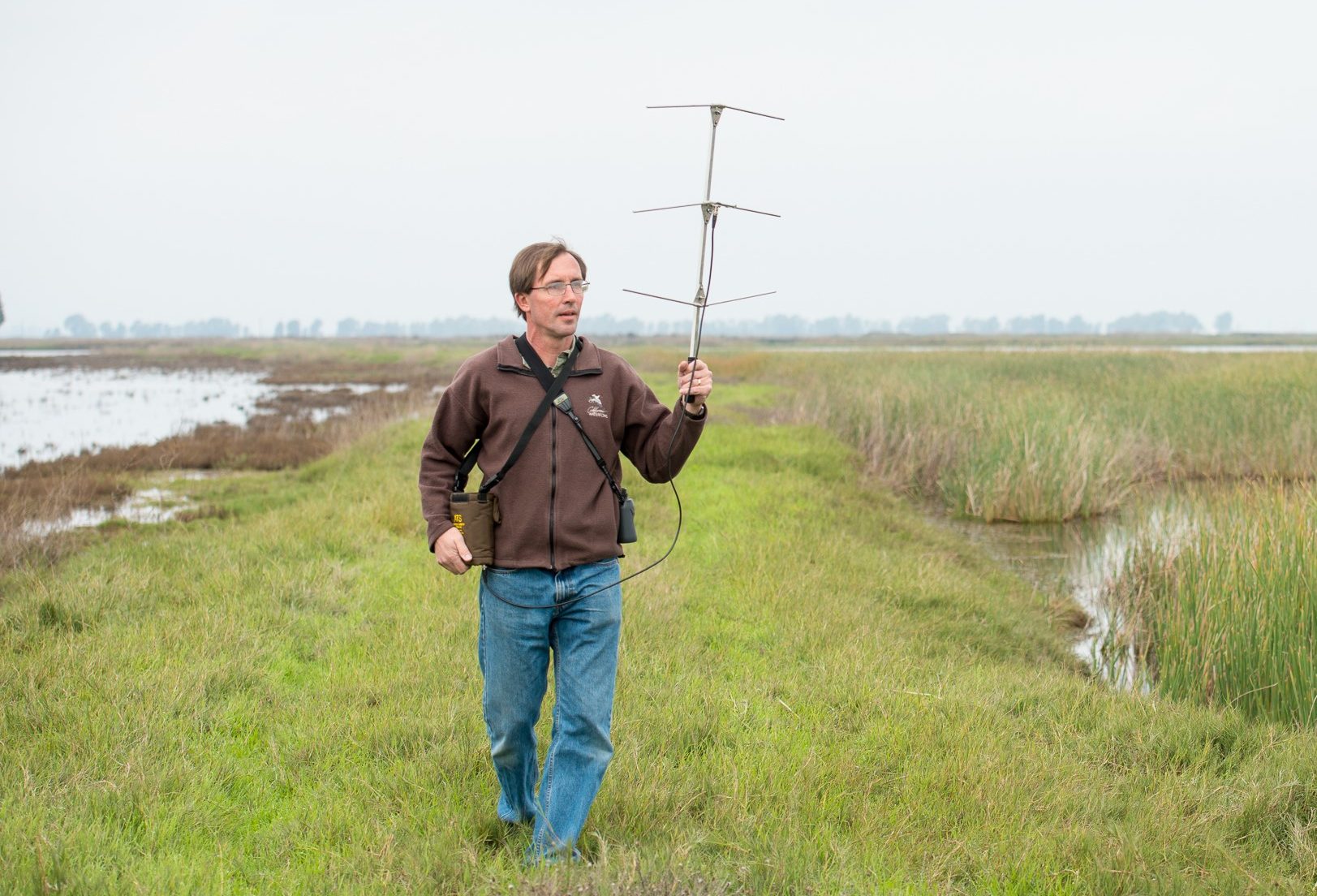Fins and Feathers Together
Waterfowl Aided by Central Valley Joint Venture
In the 1980s waterfowl numbers were at all time lows. Today, you can witness huge flocks once again scattered throughout the skies of the Central Valley. The Central Valley Joint Venture – a broad coalition of conservation organizations, and government agencies focused on making the better bird habitat – has long been at the center of this amazing conservation success story. The Central Valley Habitat Joint Venture was formally organized in 1988 and strives to conserve migratory birds and their habitats in the Central Valley of California. The Management Board now consists of twenty public and private members and is administered by a Management Board in coordination with the U.S. Fish and Wildlife Service.
Across North America, there are 22 different Migratory Bird Joint Ventures that work cooperatively to conserve habitat for the benefit of bird species, other wildlife, and people.

Map of the 22 Migratory Bird Joint Ventures in North America.
A recent report by the Audubon Society found that almost all other types of birds, other than the water birds that are the focus of the Joint Venture efforts have dramatically declined throughout North America. Migratory Bird Joint Ventures have been successful at maintaining these bird populations by bringing together diverse bird interests to work collaboratively. Now, driven by science that shows that connected marsh lands are critically important for river fish as well as waterbirds, the coalition is broadening even further.
CalTrout Joins the Central Valley Joint Venture
On February 17, 2022, the Central Valley Joint Venture approved California Trout as a member organization. Of the 22 bird conservation Joint Ventures across North America, this represents the first time a fish conservation organization has become a partner and joined a Management Board.
CalTrout’s Central Valley Project Manager, Cliff Feldheim, will represent CalTrout on the Management Board. Feldheim is no stranger to the Central Valley Joint Venture having served on various committees and on the Management Board over the last 25 years (prior to coming to CalTrout in 2021). In 2020, the CVJV released an updated Implementation Plan, which Feldheim helped write. The plan offers a framework for establishing habitat and population objectives for major bird groups within the Central Valley.

Cliff Feldheim looking for radio-transmittered Tule Geese at Suisun Marsh. Photo Credit: Florence Low.
“Habitats and species are all interconnected in our River Valleys,” said Feldheim. “It’s time that we manage the Central Valley like the interconnected system that it is.”
Ducks Unlimited’s Western Regional Director Jeff McCreary nominated CalTrout and stated “The Central Valley is in a new era of bird conservation that involves re-imaging both the current vestigial and historic, leveed-off floodplain ecosystems. This points to a future where many of the current activities remain but are reconfigured or adapted to provide additional ecosystem benefits.”
Feldheim believes the inclusion of CalTrout will set a precedent on the national stage. “There is a lot of talk about multi-species and ecosystem management. Now we have a chance to actually step up and do it in the Central Valley.”






1 Comment
Great move by all. This is the best way forward for waterfowl and fish conservation!